Your ears do more than just frame your face. They are also essential to your ability to hear things. Neat — only one paragraph deep into this article about the best ear protection for shooting, and you’re already learning!
Aside from the occasional banging together of rocks and enthusiastic war cry, our prehistoric ancestors lived in a relatively quiet environment. Their ears did not develop to accommodate very loud noises, such as the report of a gunshot. That means if you would expose yourself to such noises, you must also protect your hearing.
How Loud Noises Damage Hearing
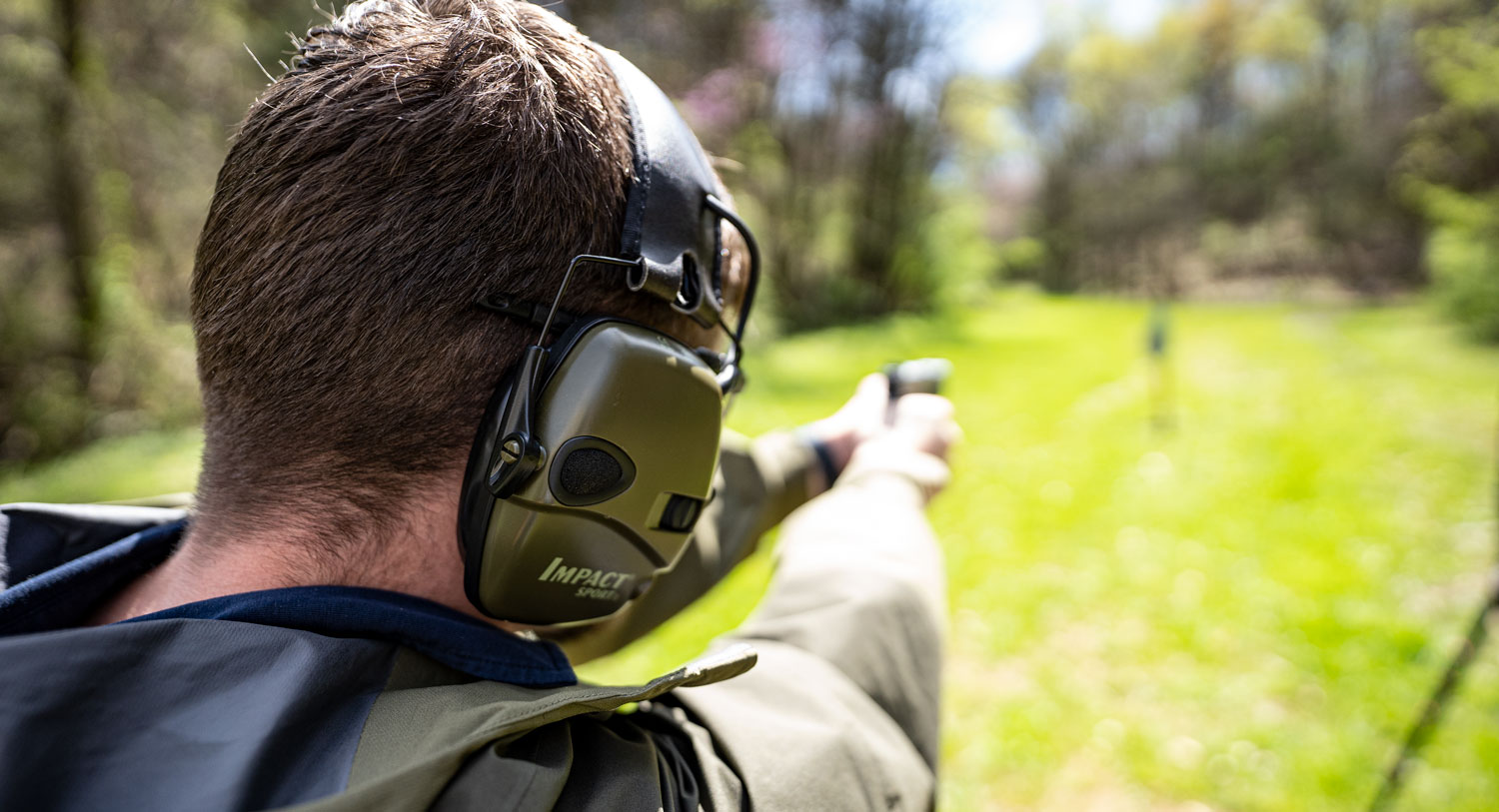
Exposure to loud noise damages hearing in two main ways:
1. Destruction of hairs in the cochlea. You were born with about 16,000 hairs in the cochlea of your inner ear. These hairs detect vibrations in the air around you and transmit that information to your brain as sound. When the hairs are exposed to loud noises, they will temporarily bend down. This is why people have to yell at each other as they’re leaving a rock concert. But if a noise is loud enough, those hairs will die instead of bending. You’ll begin to notice permanent hearing loss after you’ve lost 30 to 50 percent of the hairs in your cochlea.
2. Nerve damage. The cochlear hairs aren’t the only vulnerable ear bits. Very loud noises can damage the nerves that transmit aural feedback to the brain as well. Like the hairs, those nerves are irreparable; Once they’re gone, they’re not coming back. Without them you’ll have to crank the volume on the TV up to 11 if you want to hear Steve Harvey’s charming repartee on Family Feud.
Even among non-shooters, hearing loss is quite common. (One in three older adults suffer hearing loss according to the National Institutes of Health.) So, if you’re going to be around loud noises in an easily controlled setting, why not protect yourself?
How Loud Is Too Loud?
The intensity of a sound is measured in decibels, or dB. We won’t bore you to tears with a scientific definition of dB, which would include words like “logarithmic,” “telephony,” and “psychophysics.” What’s crucial to understand about dB is this: Sounds that register over a certain dB threshold will damage your hearing.
This chart lays out several sounds and their dB levels:
Decibel Levels of Environmental Noises
| Perceived dB (Approx.) | Environmental Noise |
|---|---|
| 0 | Threshold of Hearing |
| 20 | Outdoors Without Wind |
| 25 | Whisper |
| 40 | Quiet Street |
| 55 | Refrigerator |
| 60 | Casual Conversation |
| 70 | Busy Restaurant |
| 75 | Vacuum Cleaner |
| 80 | Classical Music Concert |
| 85 | Threshold of Hearing Loss |
| 95 | Lawnmower |
| 100 | Chainsaw |
| 120 | Woodchipper |
| 125 | Threshold of Pain |
| 134 | 22 LR Rifle |
| 140 | Jet Engine |
| 150 | 410 Bore |
| 155 | 223 Remington Rifle |
| 156 | 12 Gauge, 30-30, 44 Special |
| 157 | 45 ACP |
| 158 | 38 Special |
| 164 | 357 Mag, 44 Mag |
| 200 | 460 Weatherby Magnum |
| 248 | Bombing of Hiroshima |
| 310 | Eruption of Krakatoa |
| ∞ | 12 Year Olds at Justin Bieber Concert |
Please note that a cartridge’s dB level can vary according to a number of factors. Still, it’s safe to conclude that any gunshot is going to produce enough noise to permanently damage your hearing.
You don’t want to lose your ability to hear. Without it, you would have no way of conversing with telemarketers who are trying to warn you that the warranty on your car has run out for the 867th time in the past year. That’s why hearing protection is as necessary at the range or during a hunting trip as your firearm itself.
How to Pick the Best Ear Protection
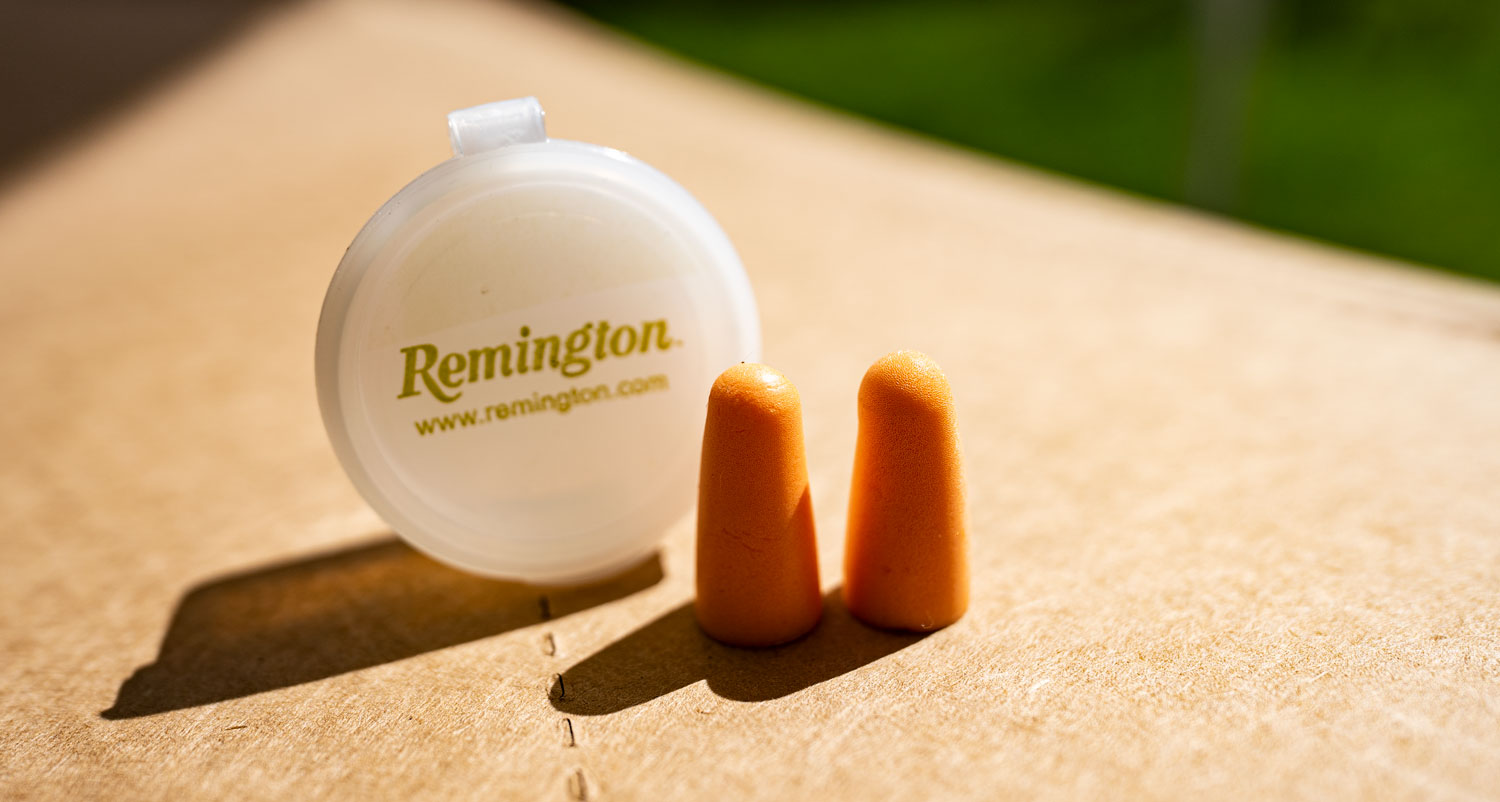
Before selecting your hearing protection, you must understand what a Noise Reduction Rating (NRR) is. A hearing protection device’s NRR measures how capable that device is of reducing its wearer’s exposure to noise. A higher NRR translates to greater noise reduction.
Note that the number of dB a hearing device reduces is not equivalent to its NRR: Ear muffs with a 30 dB NRR will not turn a 140 dB noise into a 110 dB noise. Where χ equals NRR, the dB reduced is equal to (χ-7)/2. Using that equation, we can see that 30 dB NRR ear muffs actually cancel out (30-7)/2 dB, or 11.5 for those of us who dozed off in math class. The highest NRR available from an ear protection device is 33, which will adequately dampen the reports of small arms to protect your hearing.
Three Types of Hearing Protection Devices
Earplugs for Shooting
These are the soft bullet-shaped foam or rubber things that flight attendants throw at passengers who unwittingly reserved seats next to a colicky baby. Their main advantage is that they are cheap — usually less than a quarter a pair for foam ones when you buy a bunch at once, which means you can throw away grimy ones without guilt.
Earplugs fall flat in terms of comfort. Remember that scene in Wrath of Khan where Khan puts a brain eating worm in some guy’s ear? Earplugs aren’t as unpleasant as brain worms, but they’re in the same ballpark. Earplugs also mute out sound indiscriminately, which can pose problems while you’re hunting and trying to divine the presence of critters with all of your senses. They’re also tricky to put in when the cold has numbed your fingertips.
Our pick for best earplugs for shooting: This is a pretty subjective subject. We suggest trying a few different brands. They are all very similar and we wouldn’t waste too much time thinking about it. Instead, think of something fun. Like shooting rifles or swimming pools.
Best Passive Ear Muffs at the Shooting Range
These look like a plastic version of what you’d send your kid to school wearing during the winter (a season also known in Minnesota as “not July.”) Ear muffs are far more comfortable to wear than little foam corks that you jam into your ear canals. They’re also a lot more convenient, and you won’t have to feel like a huge dork digging foam out of your ears just so you can hear your buddy brag about the amazing shot he just made.
Passive ear muffs are more expensive than earplugs, but they’re reusable for a lot longer as well. Ear muffs are designed to mold to the contours of the head, although they can still leave gaps for sound to seep through. Some shooters opt for the best of both worlds by wearing earplugs in conjunction with earmuffs, although their NRRs do not add up. 31 NRR earmuffs worn over 33 NRR earplugs yield a combined NRR of only 36, not 64.
Like earplugs, passive ear muffs also mute sounds indiscriminately. To get around that inconvenience, you want the best (and not coincidentally most expensive) hearing protection device.
Our pick for best passive ear protection for shooting: We don’t recommend these on their own. If you pair them with earplugs, that’s great. If you’re going to the range once and use the rentals at the counter, that’s good too. However, the $20-$30 you spend for a fairly comfortable pair can often be better spent on a set of electronic muffs.
Best Electronic Ear Muffs for Shooters
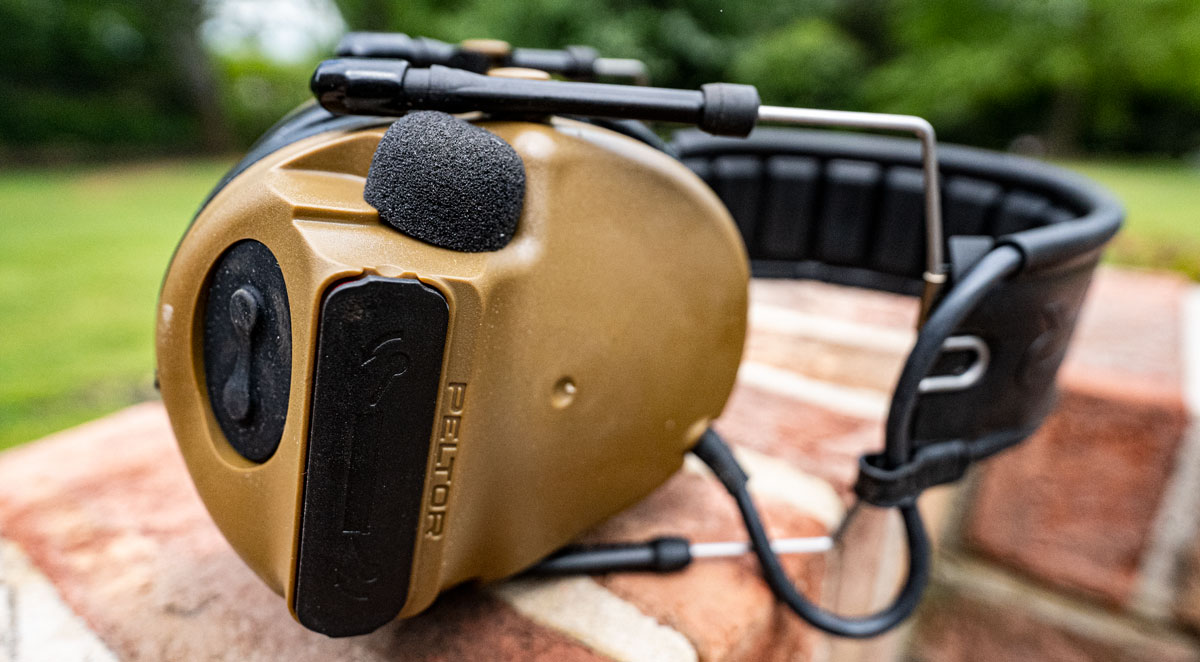
We love everything about electronic ear muffs except paying for them. Thanks to the miracles of technology and magic, electronic ear muffs are able to selectively filter out the sound of gunshots from your environment. With them on you can still hear your buddy complaining about his mother-in-law or the huffing of an agitated bear. If you like to socialize or hunt while you’re holding a firearm, electronic ear muffs are well worth the investment.
Our pick for best electronic ear pro: It’s hard not to like the Peltor line from 3M but they are pretty costly. The standard for most shooters is the Howard Leight ear pro. You see them everywhere, they’re fairly comfortable and they will typically run you less than $50. Heck, look at the photo up above of Nolan from our team. That’s what he wears and it’s been a great fit for him.
The Takeaway
If you wish to keep your sensitive ear parts from becoming irreversibly damaged by gun reports — and you do — then you must wear hearing protection. Even the diminutive 22 LR is loud enough to gradually deafen you. Whether you choose cheap earplugs or more expensive ear muffs, make sure their NRR is adequate to protect your hearing from the thunderous reports of gunfire. Even if you fire your 308 Win only once while you’re out hunting, that is enough to permanently damage your hearing!

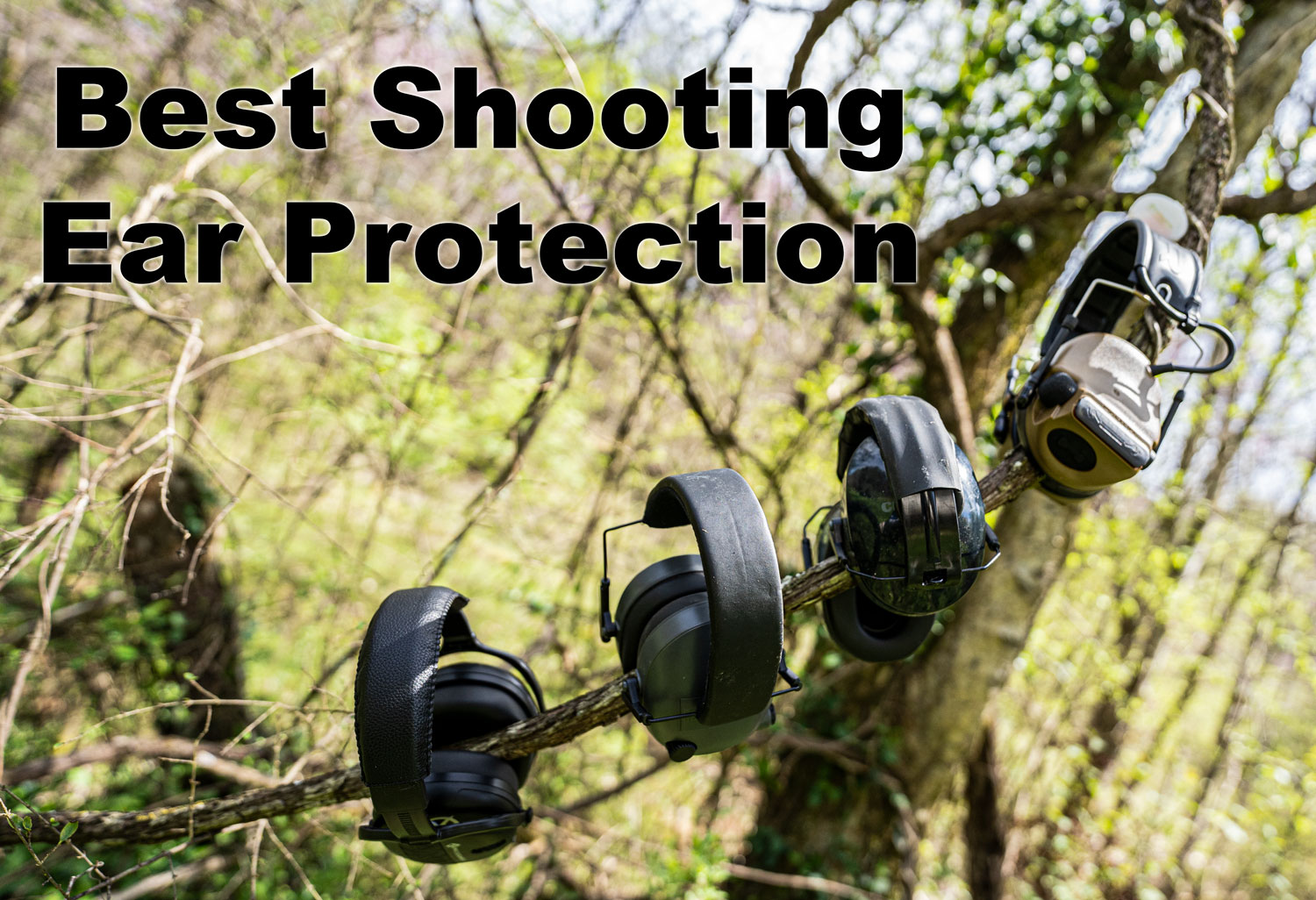
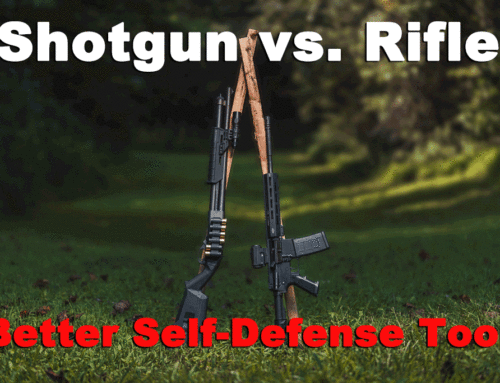
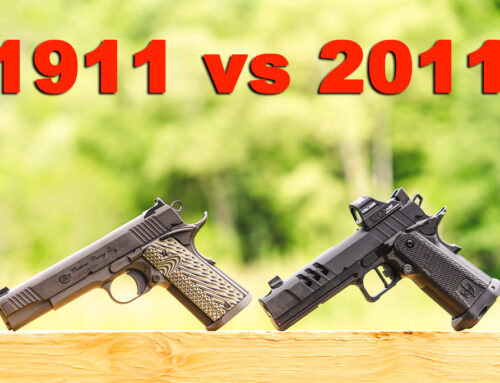

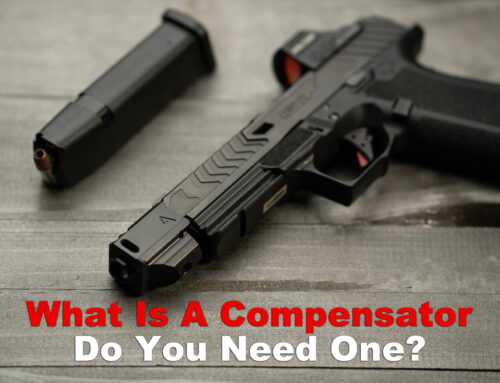
Leave A Comment